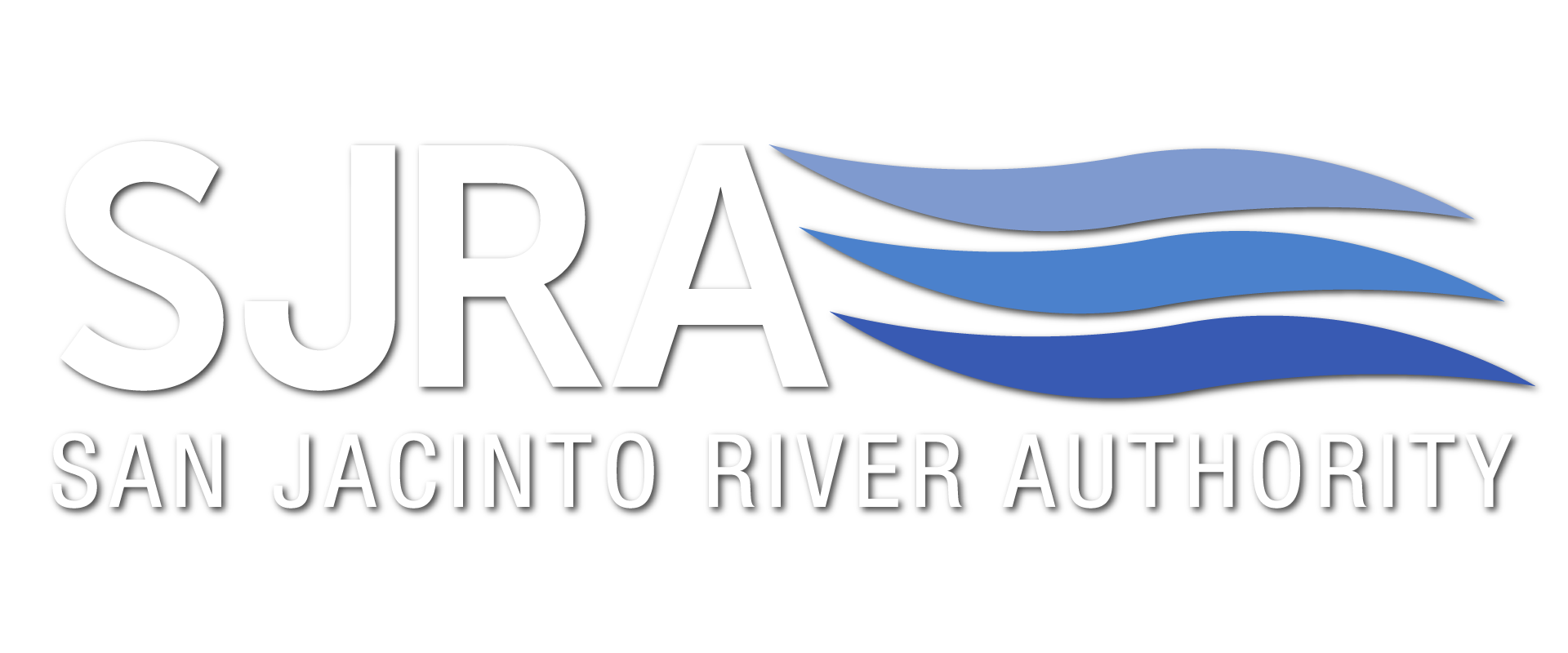And what does it mean to the water industry??
By: Matt Volna, SJRA SCADA Manager
For those not in technical or engineering fields, SCADA may be an unfamiliar term. SCADA is an acronym for Supervisory Control and Data Acquisition. The San Jacinto River Authority’s (SJRA) SCADA system is a control system architecture that utilizes networked data communications between servers, operator workstations, programmable logic controllers (PLCs), field instruments, and human machine interfaces (HMIs) to allow for supervisory control and management of the processes of the SJRA. But, what does that really mean?
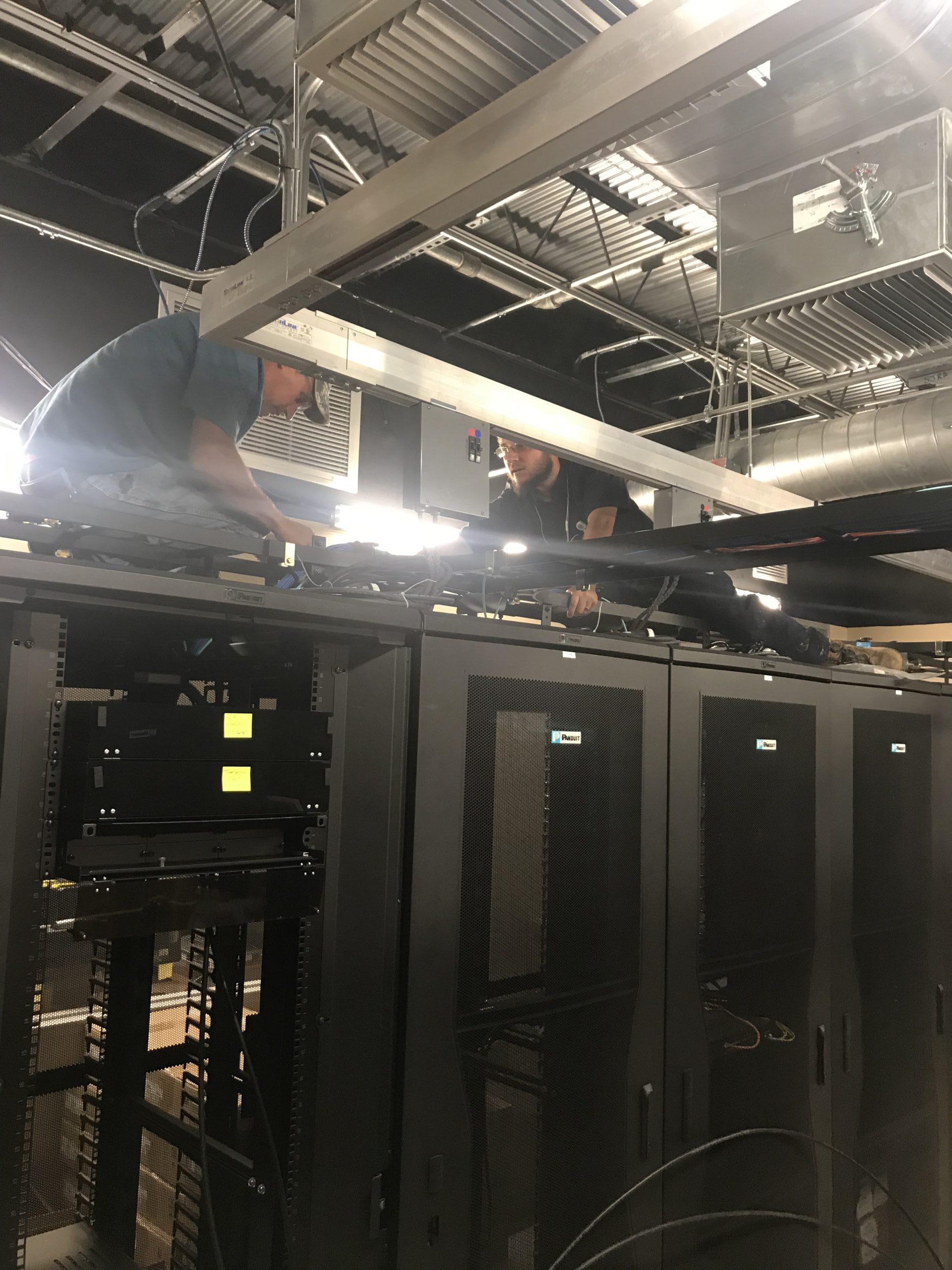
Fiber Optic Cable Installation
When most people think of SCADA, at least those that have even heard of it, they picture someone sitting at a computer with a process laid out on the screen and the ability to turn on a pump, open or close a valve, and make process decisions from a centralized location. Those kinds of operations are certainly part of SJRA’s current SCADA systems, but these systems consist of much more than just the computer and screens with buttons to turn equipment on and off. SCADA relies on fiber optic cables to connect distant devices, radios and cellular communication devices to reach remote locations, and Ethernet cables to link nearby devices.
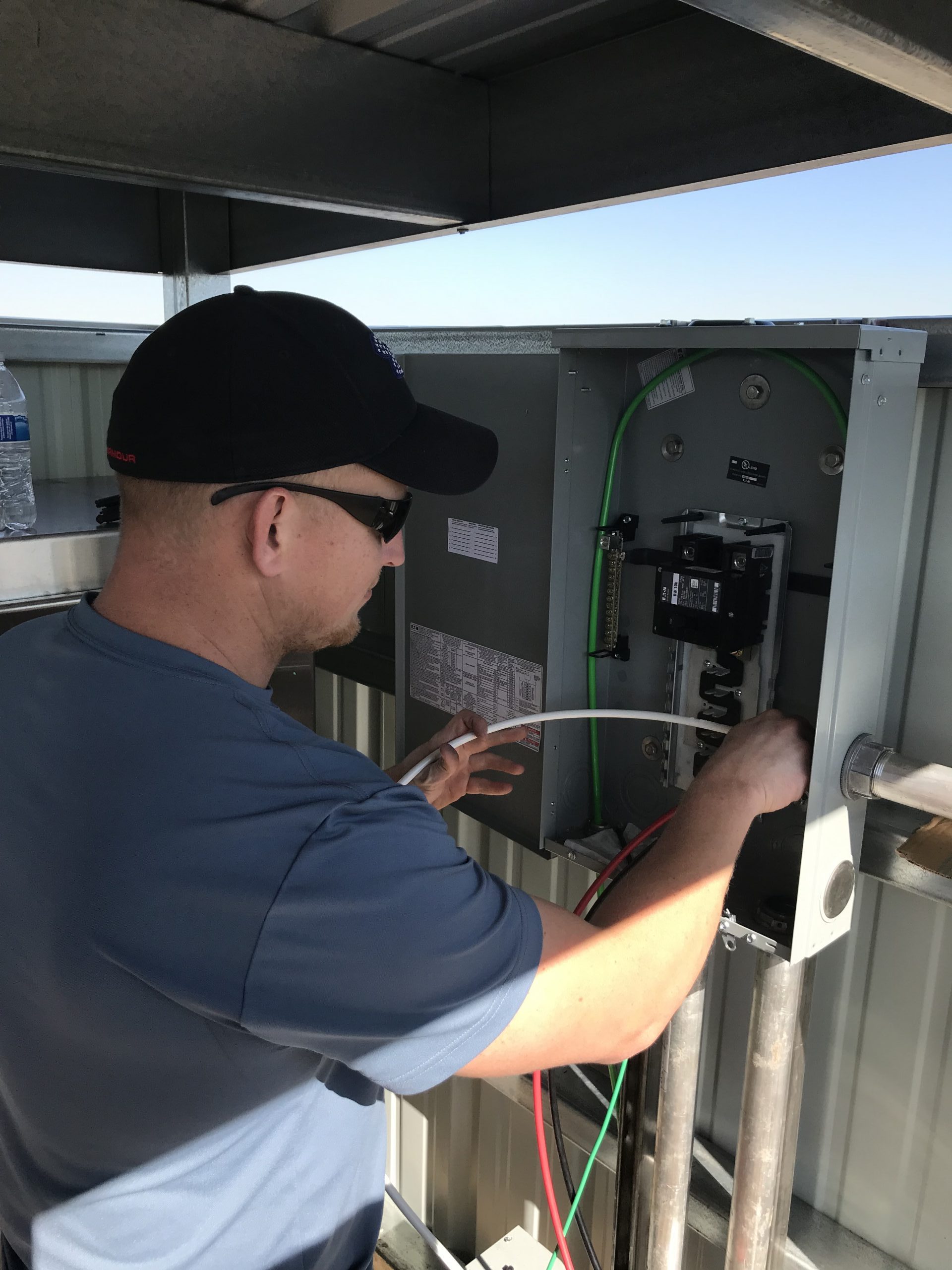
Electrical Connection Setup
Many of the devices on a SCADA network are similar to those of an IT Department. In fact, the SJRA SCADA/Instrumentation & Controls Department (I&C) has a dedicated network of servers, switches, routers, and computers along with fiber optic and Ethernet cables connecting them all. In addition to computers and servers, the network includes all the PLCs, local HMIs, and network connections that import data from process instruments installed in the field. All told, SJRA’s SCADA systems host over 1,200 network devices. For all this to be installed, maintained, and monitored, SJRA has a staff of three highly-trained SCADA employees who specialize in networking, programming, communications, and cybersecurity.
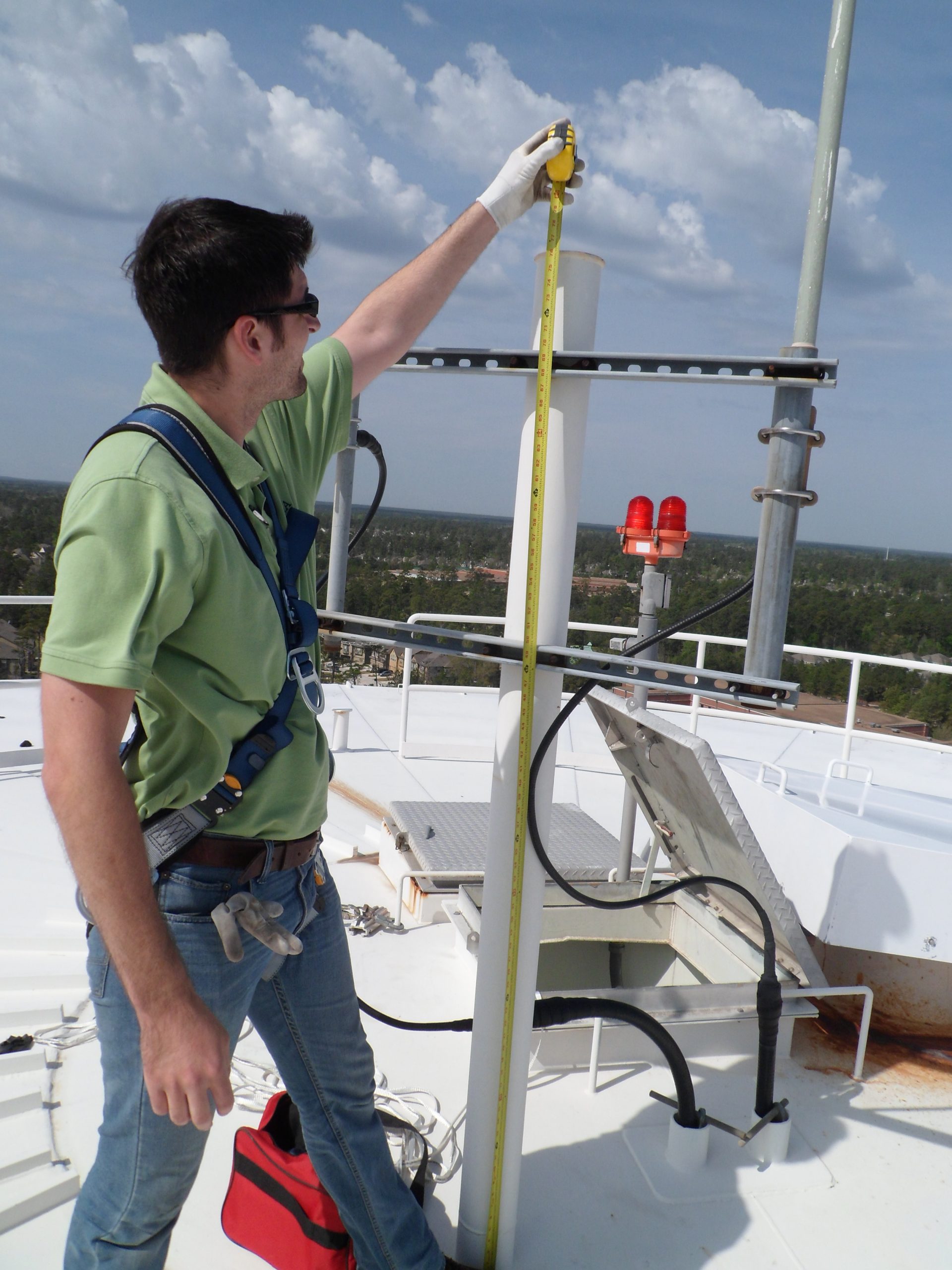
Antenna Installation
Now, where does the data that is shared between the PLCs, HMIs, servers, and operator workstations actually come from? It comes from the process instruments in the field (flow meters, pressure transmitters, pump starters, etc). The instruments send data to a local PLC via a network connection or by means of a direct, electrical connection. A PLC is an industrial computer that can be programmed to perform a specific task. The PLC is programmed by the SCADA team to do any required tasks the machines are capable of doing. The program could be as simple as starting a pump if a tank gets low, or it could be as complicated as checking the dissolved oxygen content in a basin and starting or stopping any of six blowers while also setting the positions of 20 different valves at a wastewater treatment plant. The PLC can then send its data to any remote location that requires it. A water plant may send data to an off-site well location miles away telling the well to start, or it could be sending the data back to the office. Back at the office, it can be archived and stored for many purposes including generating reports, troubleshooting maintenance issues, or fine-tuning more efficient processes. With the complex processes of SJRA, operators are often finding ways of improving plant operations. When this happens, they ask the SCADA specialists to modify the PLC programs.
Like the SCADA Team, the I&C team consists of highly skilled technicians. I&C professionals have the responsibility of maintaining, calibrating, installing, commissioning, decommissioning, and troubleshooting all the field instruments of SJRA. This includes more than 780 different instruments (e.g. pressure transmitters, level transmitters, position encoders), over 190 flow meters, more than 75 uninterruptable power supplies, and over 20 different electric valve and gate actuators. This team also maintains all the analytical instruments, including chlorine analyzers, sulfur dioxide analyzers, pH probes, dissolved oxygen probes, and turbidity meters. Altogether, there are over 1,200 assets that the I&C team maintains on a daily basis.
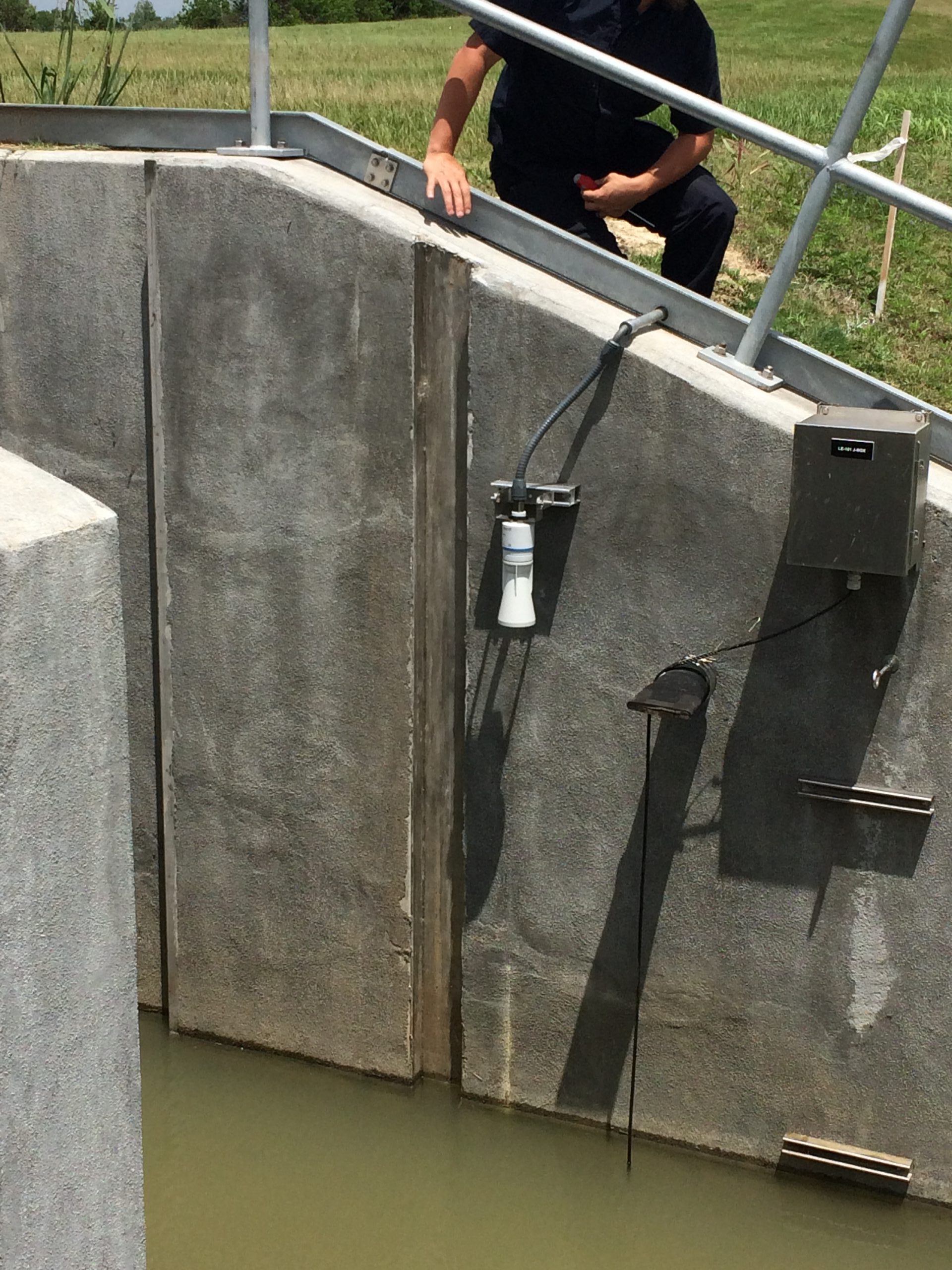
Radar Level Transmitter
This team is also tasked with maintaining all of the control panels. Some control panels come with a project (e.g. when a process is installed), however there are many that the I&C team needs to build and install. Also, with three licensed electricians on the team, I&C assists the SJRA operating divisions that do not have their own dedicated maintenance department. The I&C team also has the responsibility of monitoring raw water customer instruments to verify they are calibrated to our standards.
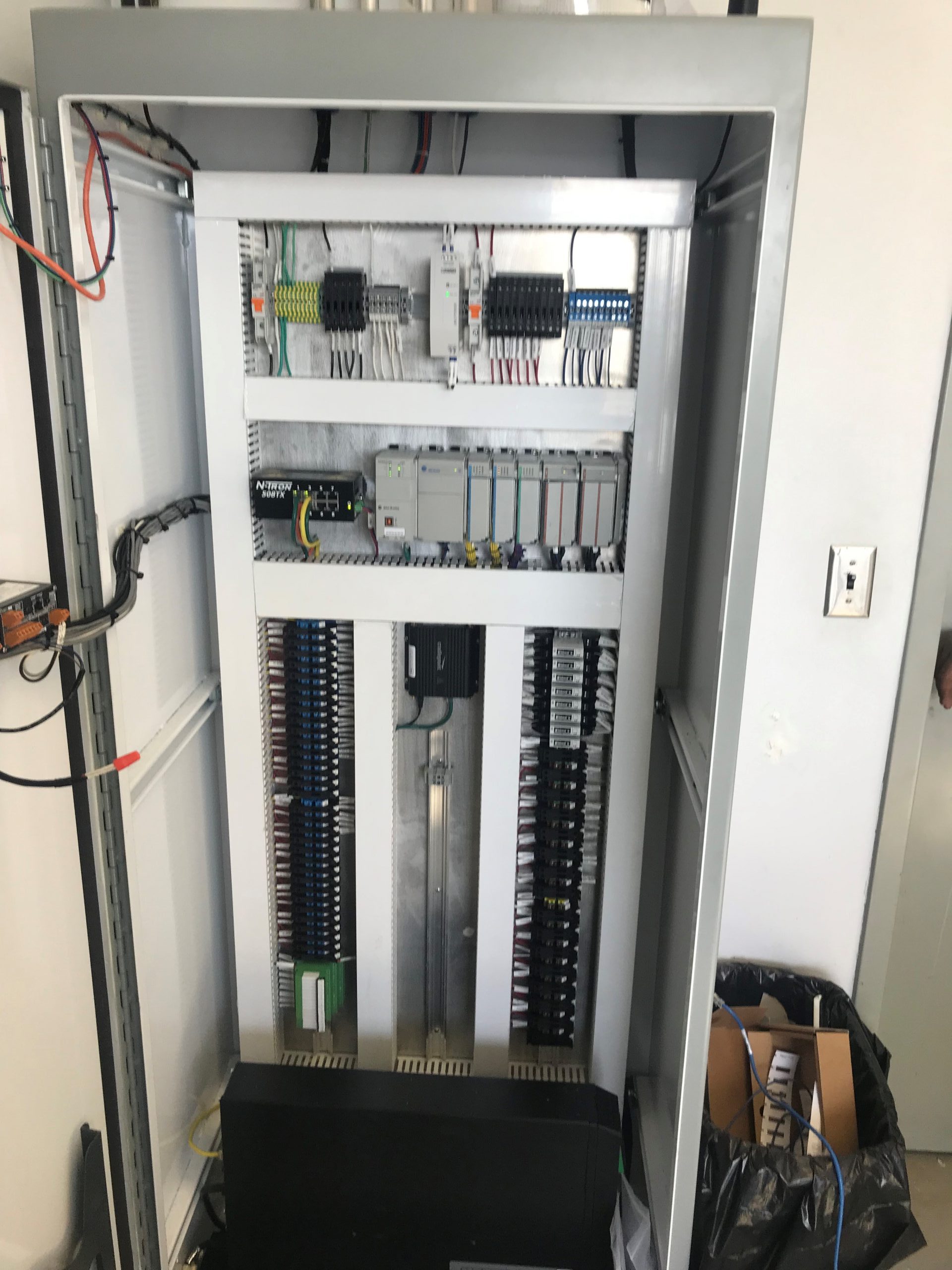
PLC Panel
SCADA systems constantly monitor all SJRA systems. Because of this, SJRA SCADA staff can be alerted 24/7 if there is a situation that requires their attention. If there is a power outage that happens at 11:00 P.M. on Saturday, the maintenance staff will be alerted; if a pump fails to stop at any time, an operator will be notified to go out and manually stop it. Additionally, it allows the operators to remotely monitor and manipulate the systems they are responsible for with better precision and accuracy.
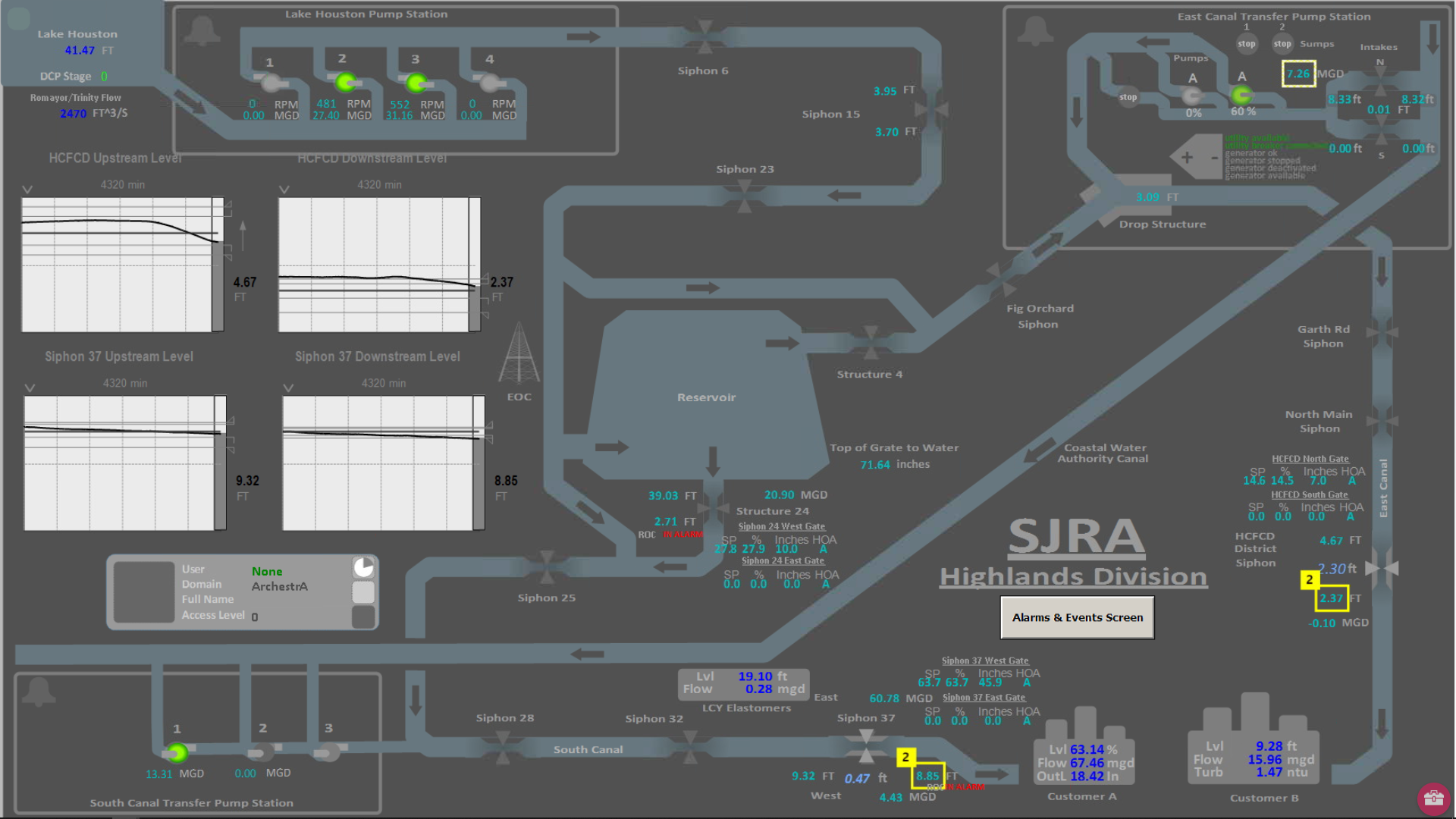
Highlands SCADA System Screenshot
With the ever-growing demand for reliable water delivery, the collection and treatment of wastewater, responsible discharge of treated wastewater to the environment, and delivery of raw water to serve industry, the water business is becoming more complex. This complexity requires the knowledge and expertise of the most experienced operators as well as a dedicated team of technicians and specialists to keep the systems running at peak performance.
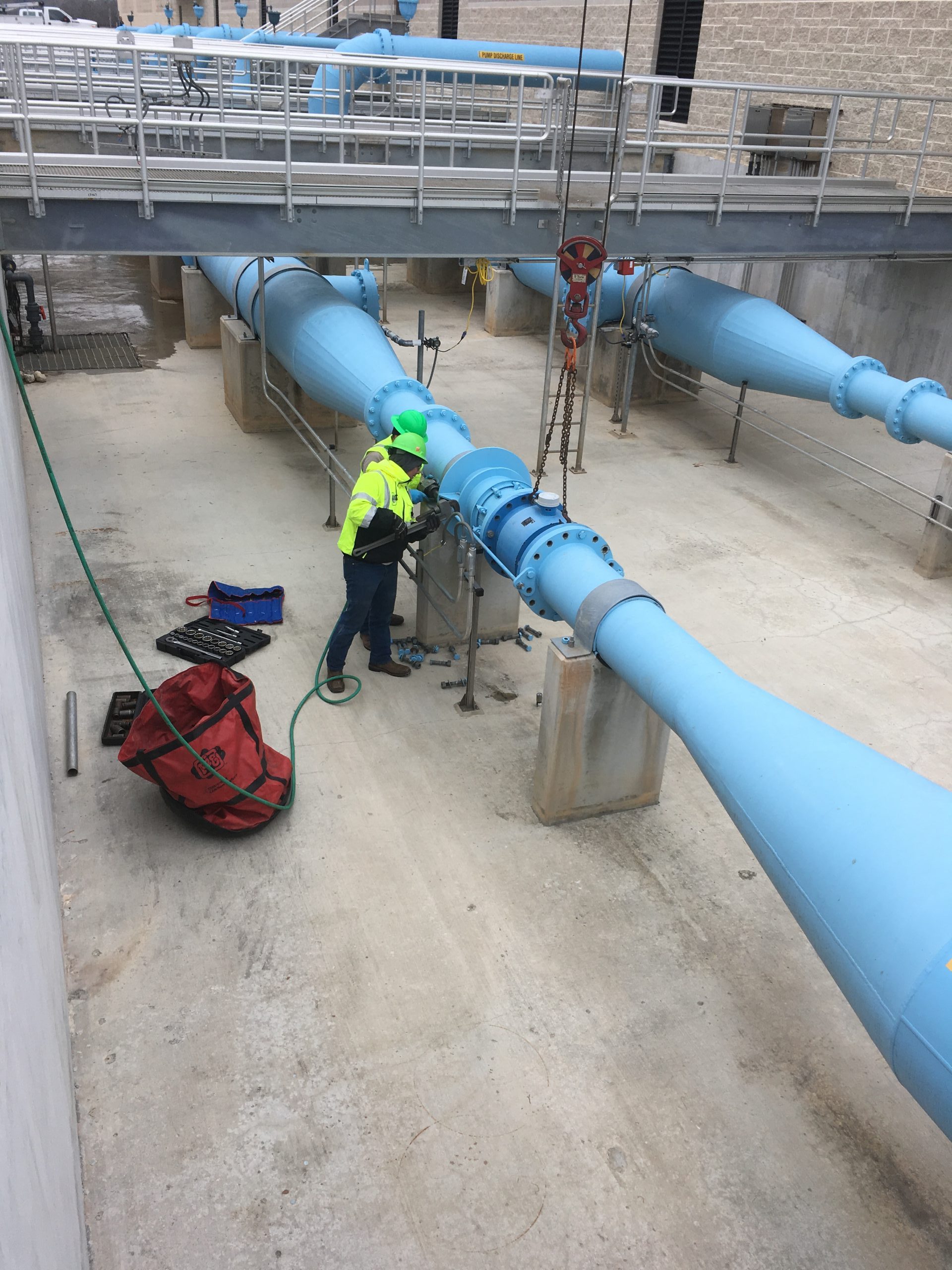
Flow Meter Removal for Calibration
One of the major river authorities in Texas, SJRA’s mission is to develop, conserve, and protect the water resources of the San Jacinto River basin. Covering all or part of seven counties, the organization’s jurisdiction includes the entire San Jacinto River watershed, excluding Harris County. If you would like to know more about SJRA, what we do, and how we work for the community, check out our website at www.sjra.net, like SJRA on Facebook @SanJacintoRiverAuthority, follow us on Twitter @SJRA_1937, or follow us on Instagram @SanJacintoRiverAuthoritySJRA.
Featured in the December, 2019 Issue of Dock Line Magazine.

